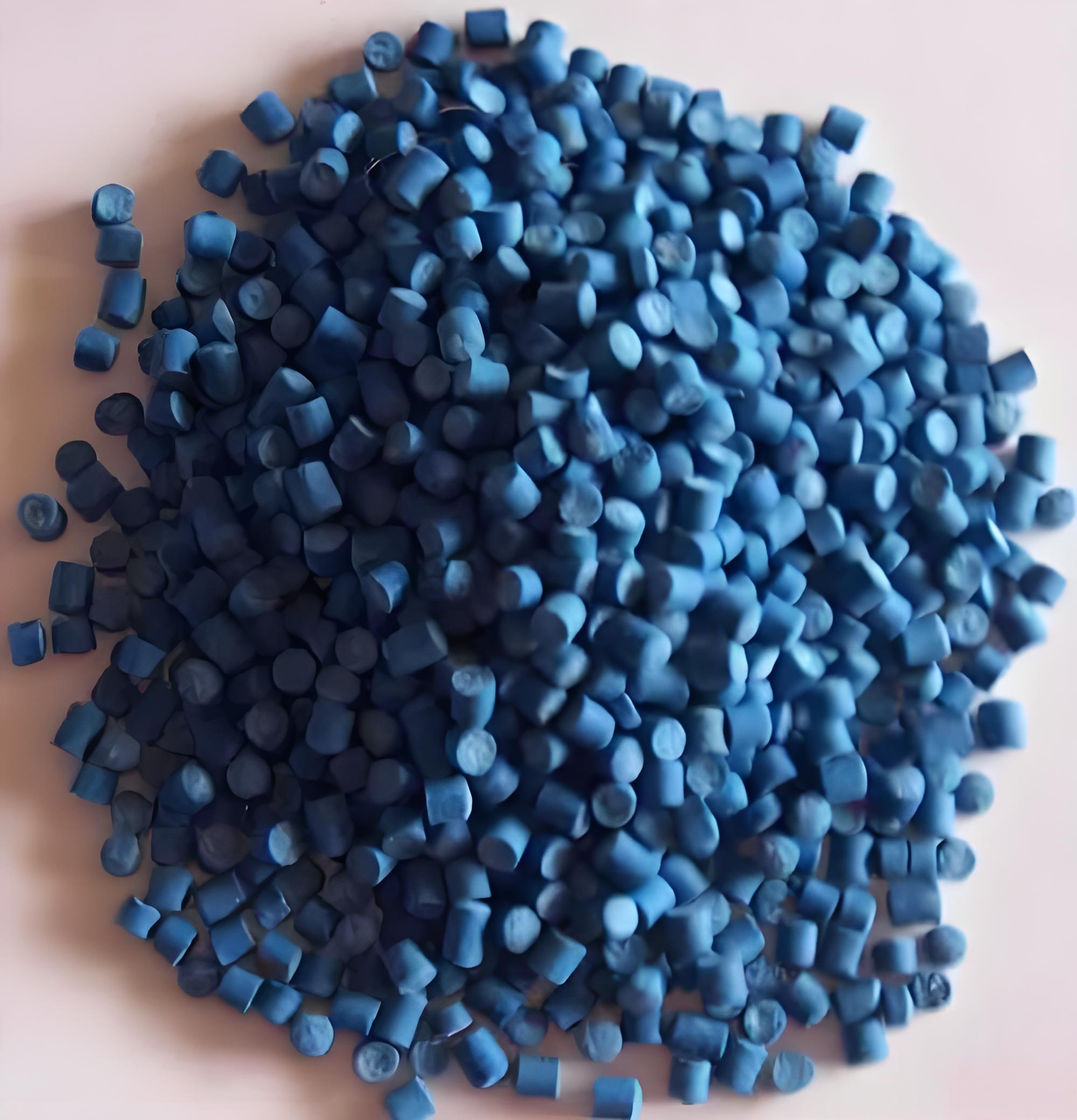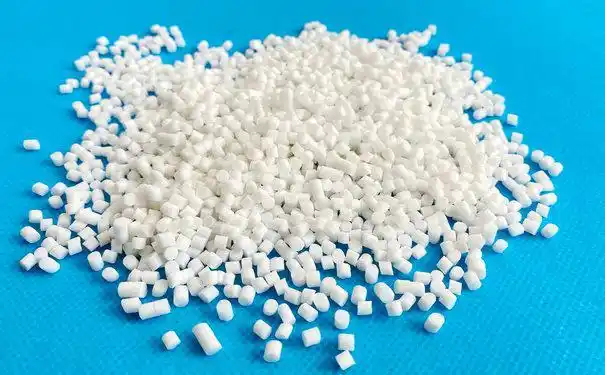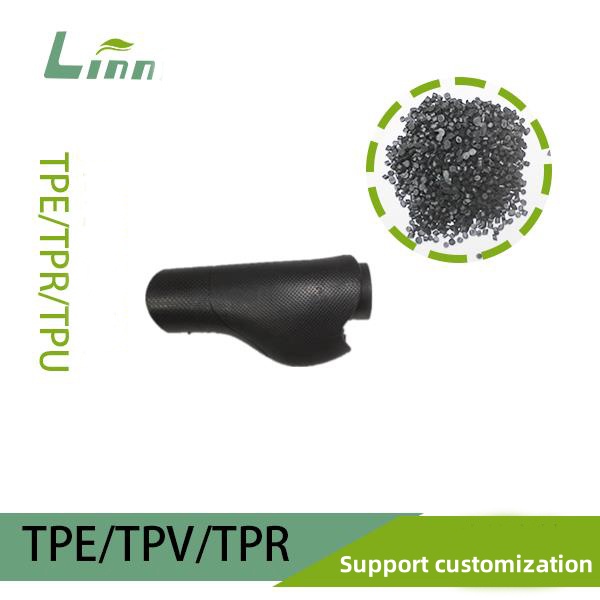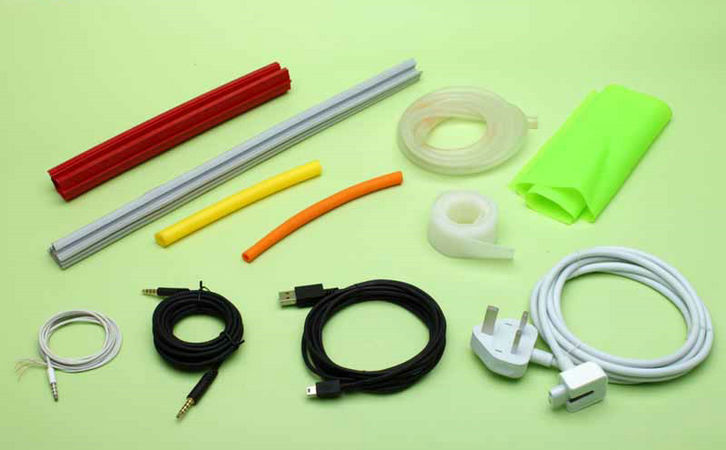Having spent over 15 years in the world of thermoplastic elastomers (TPEs), I’ve encountered my fair share of challenges in the production process. One issue that frequently pops up, especially during TPE granulation, is the presence of unwanted odors. Whether you’re running a compounding line or troubleshooting a batch for a client, that distinct smell wafting from the extruder can be a real headache. It’s not just about the discomfort—it can affect worker safety, product quality, and even customer satisfaction. So, what causes these odors during TPE granulation, and how can you address them? Let me walk you through the reasons, drawing from my experience, and share practical solutions to keep your production line running smoothly and odor-free.

What Happens During TPE Granulation?
Before diving into the causes of odors, let’s quickly set the stage. TPE granulation involves compounding raw materials—like base polymers, oils, fillers, and additives—into a molten state, extruding them into strands, and cutting them into pellets. These pellets are then used for injection molding, extrusion, or other processes to create final products like grips, seals, or medical tubing. The process often involves high temperatures (typically 180-220°C) and shear forces, which can trigger chemical reactions or release volatile compounds, leading to odors. Understanding these dynamics is key to pinpointing the source of the smell.
Why Odors Occur in TPE Granulation
From my years in the field, I’ve identified several common culprits behind odors in TPE granulation. These range from material properties to processing conditions and even equipment issues. Below, I’ll break down the main causes and explain why they happen.
1. Volatile Organic Compounds (VOCs) in Raw Materials
TPE formulations often include plasticizers, oils, and additives like stabilizers or flame retardants. These components, especially mineral oils or low-molecular-weight polymers in styrenic block copolymers (e.g., SEBS or SBS), can release VOCs when heated. These compounds evaporate at high temperatures, creating a noticeable smell, often described as oily, chemical, or burnt.
Why it happens: Oils and plasticizers have low boiling points, and during extrusion, they can volatilize, especially if the TPE formulation uses high oil content (common in soft TPEs).
Example: I once worked with a client producing soft TPE grips who noticed a strong petroleum-like smell. Testing revealed that their SEBS-based TPE contained a high percentage of paraffinic oil, which was releasing VOCs at 200°C.
2. Thermal Degradation of Polymers or Additives
High processing temperatures can cause thermal degradation of the TPE’s polymer backbone or additives. For instance, styrene-based TPEs (TPS) or thermoplastic polyurethanes (TPUs) can break down if overheated, releasing volatile byproducts like styrene monomers or isocyanates, which have sharp, unpleasant odors.
Why it happens: Overheating (e.g., above 220°C for TPS or 240°C for TPUs) can break polymer chains or degrade additives like antioxidants, leading to off-gassing. Poorly stabilized TPEs are especially prone to this.
Example: In one project, a TPU batch emitted a pungent smell during granulation. We traced it to excessive barrel temperatures (250°C), which caused partial decomposition of the polyurethane.
3. Residual Monomers or Solvents
Some TPE raw materials, particularly lower-grade or recycled polymers, may contain residual monomers or solvents from the manufacturing process. These can volatilize during granulation, producing odors ranging from sweet to acrid.
Why it happens: Incomplete polymerization or inadequate post-processing of raw materials leaves behind unreacted monomers or solvents, which are released when heated.
Example: A supplier once provided us with a batch of SBS that had a strong solvent-like smell. Analysis showed residual styrene monomer, which we mitigated by switching to a higher-purity grade.

4. Contamination in Raw Materials or Equipment
Contamination—whether from cross-contamination of materials, dirty equipment, or improper storage—can introduce odor-causing compounds. For example, trace amounts of sulfur-based additives or lubricants from previous runs can react during granulation, creating foul smells.
Why it happens: Residues in extruder screws, dies, or hoppers can degrade or react with the TPE, releasing odors. Similarly, contaminated raw materials (e.g., oils exposed to air) can contribute.
Example: I recall a case where a fishy odor plagued a TPE line. It turned out that the extruder hadn’t been properly cleaned after running a batch with amine-based additives.
5. Additives and Their Interactions
Certain additives, like flame retardants, antioxidants, or processing aids, can produce odors when heated or when they interact with other components. For instance, halogenated flame retardants or phosphorus-based stabilizers can release volatile compounds during processing.
Why it happens: Chemical reactions between additives or between additives and the TPE matrix can generate VOCs or other odorous compounds, especially at high temperatures.
Example: A client using a brominated flame retardant in their TPE noticed a sharp chemical smell. Switching to a non-halogenated alternative reduced the odor significantly.
6. Moisture or Hydrolysis
If TPE raw materials, especially hygroscopic ones like TPUs, aren’t properly dried before granulation, moisture can cause hydrolysis. This process breaks down polymer chains, releasing odorous byproducts like alcohols or acids.
Why it happens: Moisture trapped in pellets or powders reacts with the polymer at high temperatures, leading to degradation and odor.
Example: A TPU granulation run I oversaw had a sour smell due to inadequate drying. Implementing a pre-drying step at 80°C for 4 hours resolved the issue.
Comparison Table of Odor Causes in TPE Granulation
To help you identify the source of odors in your process, here’s a table summarizing the main causes, their characteristics, and initial troubleshooting steps:
|
Cause |
Odor Description |
Common in |
Initial Troubleshooting |
|---|---|---|---|
|
VOCs from Oils/Plasticizers |
Oily, petroleum-like |
Soft TPEs (SEBS, TPO) |
Use low-VOC oils, optimize temperature |
|
Thermal Degradation |
Burnt, chemical |
TPS, TPU |
Lower barrel temperature, add stabilizers |
|
Residual Monomers/Solvents |
Sweet, solvent-like |
Low-grade or recycled TPEs |
Source high-purity materials |
|
Contamination |
Fishy, sulfurous, or varied |
All TPEs |
Clean equipment, check material storage |
|
Additive Interactions |
Sharp, chemical |
Flame-retardant or stabilized TPEs |
Review additive compatibility |
|
Moisture/Hydrolysis |
Sour, acidic |
TPU, polyamide-based TPEs |
Pre-dry materials thoroughly |
How to Address Odor Issues in TPE Granulation
Now that we’ve covered the causes, let’s talk solutions. Based on my experience, tackling odors requires a systematic approach that addresses materials, processing, and equipment. Here are practical steps to minimize or eliminate odors during TPE granulation.

1. Optimize Raw Material Selection
Choose Low-VOC Materials: Opt for high-purity polymers and low-VOC plasticizers or oils. For example, use high-molecular-weight SEBS or food-grade paraffinic oils to reduce volatile emissions.
Verify Supplier Quality: Work with reputable suppliers and request certificates of analysis to ensure low residual monomer or solvent content. I’ve found that spending a bit more on quality raw materials saves headaches down the line.
Pre-Dry Hygroscopic Materials: For TPUs or polyamide-based TPEs, dry raw materials at 70-80°C for 3-4 hours before processing to eliminate moisture-related odors.
2. Adjust Processing Conditions
Lower Processing Temperatures: Keep barrel temperatures within the recommended range for your TPE type (e.g., 180-200°C for TPS, 190-220°C for TPU). Excessive heat is a common cause of degradation and odor.
Optimize Screw Speed and Residence Time: High shear or long residence times can overheat the material, increasing odor. Adjust screw speed and use a shorter barrel if possible.
Use Vacuum Venting: Equip your extruder with a vacuum venting system to remove VOCs and other volatile compounds during granulation. This was a game-changer in a project I worked on for medical TPEs.
3. Enhance Equipment Maintenance
Clean Extruders Regularly: Purge the extruder with a neutral material (e.g., PP or PE) between runs to remove residues. Use cleaning compounds for stubborn contaminants.
Inspect Dies and Screws: Ensure dies and screws are free of degraded material or buildup, which can cause odors in subsequent runs.
Check Ventilation: Ensure your production area has adequate ventilation to disperse odors and protect workers. Installing activated carbon filters can further reduce smells.
4. Review Additives and Formulations
Switch to Low-Odor Additives: Replace halogenated flame retardants or amine-based stabilizers with non-halogenated or low-odor alternatives. For example, I’ve had success using phosphorus-based flame retardants in odor-sensitive applications.
Test Additive Compatibility: Conduct small-scale trials to ensure additives don’t react adversely with the TPE matrix. In one case, switching to a different antioxidant eliminated a chemical smell in a TPO batch.
Use Stabilizers: Add thermal stabilizers or antioxidants to prevent degradation during processing. Hindered phenols or phosphites are effective for most TPEs.
5. Conduct Odor Testing
Sensory Evaluation: Train operators to identify and describe odors during granulation. This helps pinpoint the source (e.g., burnt vs. solvent-like).
Gas Chromatography-Mass Spectrometry (GC-MS): For persistent issues, use GC-MS to analyze the volatile compounds emitted during processing. This helped me identify a residual solvent issue in a client’s TPE batch.
Customer Feedback: If the TPE is for consumer products, test the final pellets or products for residual odor, as even faint smells can affect end-user perception.

Case Study: Tackling Odor in a TPE Compounding Line
A few years back, I consulted for a manufacturer producing TPE seals for automotive applications. They reported a persistent chemical odor during granulation, which was noticeable even in the final product. After visiting their facility, we identified two main issues: high processing temperatures (230°C, above the recommended range for their SEBS-based TPE) and a low-grade mineral oil with high VOC content.
We took a multi-pronged approach: reduced the barrel temperature to 190°C, switched to a low-VOC paraffinic oil, and added a vacuum venting system to the extruder. We also implemented a rigorous cleaning schedule to prevent cross-contamination from previous runs. Within a week, the odor was significantly reduced, and the client reported improved worker comfort and customer satisfaction. This experience reinforced the importance of addressing odors holistically—materials, processing, and equipment all play a role.
Challenges and Considerations
Eliminating odors in TPE granulation isn’t always straightforward. Some challenges I’ve faced include:
Balancing Cost and Quality: High-purity, low-VOC materials are more expensive, which can be a hurdle for cost-sensitive projects. Blending low-VOC oils with standard ones can help strike a balance.
Regulatory Constraints: In medical or food-contact applications, additives and materials must comply with strict regulations (e.g., FDA, USP Class VI), limiting your options for odor reduction.
Process Limitations: Older extruders may lack vacuum venting or precise temperature control, making odor control harder. Upgrading equipment or retrofitting with venting systems can be a worthwhile investment.
Future Trends in Odor Management for TPEs
The TPE industry is evolving, and so are approaches to odor control. Bio-based TPEs, like those made from renewable feedstocks, are gaining popularity, and many have lower VOC profiles than traditional petroleum-based TPEs. Advances in additive technology are also promising—new low-odor stabilizers and plasticizers are being developed to meet consumer demand for eco-friendly, odor-free products. Additionally, smart compounding techniques, like in-line VOC extraction, are becoming more accessible, even for smaller manufacturers.
In my recent projects, I’ve also seen increased use of odor-neutralizing additives, which chemically bind volatile compounds during processing. These are still in early stages but show potential for applications like automotive interiors, where odor is a critical quality factor.

Final Thoughts: Keeping Odors at Bay
Dealing with odors during TPE granulation can feel like chasing a moving target, but with the right approach, it’s manageable. From my experience, the key is to start with high-quality, low-VOC materials, optimize your processing conditions, and maintain your equipment diligently. Whether you’re producing TPEs for medical devices, automotive parts, or consumer goods, addressing odors not only improves the production environment but also ensures your product meets customer expectations.
If you’re facing odor issues in your TPE granulation process, don’t hesitate to experiment with small adjustments—lower temperatures, better ventilation, or a different oil grade can make a big difference. And if you’re stuck, consider consulting with your material supplier or running analytical tests to get to the root of the problem. A clean, odor-free process is within reach, and it’s worth the effort for both your team and your customers.
Related Questions and Answers
Q: Can I completely eliminate odors in TPE granulation?
A: Completely eliminating odors is challenging, but you can significantly reduce them by using low-VOC materials, optimizing processing conditions, and installing vacuum venting. Some residual odor may persist, especially in soft TPEs with high oil content.
Q: Are there additives specifically designed to reduce odors?
A: Yes, odor-neutralizing additives and low-odor stabilizers (e.g., phosphite-based antioxidants) can help. Test them in small batches to ensure compatibility with your TPE formulation.
Q: How does vacuum venting help with odor?
A: Vacuum venting removes volatile compounds during extrusion, reducing the concentration of odor-causing VOCs. It’s especially effective for TPEs with high oil or additive content.
Q: Is odor in TPE pellets harmful to workers?
A: Most odors from TPE granulation are not harmful but can cause discomfort. Ensure proper ventilation and monitor VOC levels to protect workers. For medical or food-contact TPEs, verify compliance with safety standards.
Q: Can recycled TPEs cause more odor than virgin materials?
A: Yes, recycled TPEs often contain residual monomers, solvents, or contaminants that increase odor. Use high-quality recycled materials and pre-process them to minimize volatiles.





